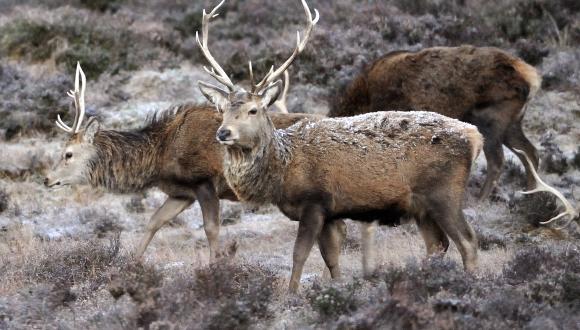Deer in urban areas
As low ground deer populations spread – particularly roe deer in and around urban areas – we explore the impact for deer and people.
Understanding the interactions between deer and people in and around towns, and the context in which lowland deer management operates continues to be a core area of work for us.
Our approach
NatureScot:
- works with a range of land managers, including local authorities, to promote awareness of and education around potential deer issues in and around urban areas
- develops site-specific solutions to resolve issues such as deer vehicle collisions, damage to woodlands, private property and greenspace and conservation interests, wildlife crime and deer welfare
- has created Best Practice Guides on Deer in Towns: Challenges and Opportunities and Deer in Towns: Responding to Situations
- works with lowland deer groups to support deer management being carried out effectively in line with Best Practice Guides and provides advice – particularly where public access and media involvement are challenges
- continues to use thermal imaging as a basis to judge local populations and distribution as well as being a useful tool for engaging with land managers, such as local authority staff
Previous research
Growing numbers of deer are moving into peri-urban areas – defined as the mosaic of mixed land uses found around our towns, from housing and transport to agriculture and forestry.
Forest Research published a piece of research, The management of roe deer in peri-urban Scotland, in 2009. This examined the range of often complex issues that arise when deer and people try to live side by side in and around towns.
Questionnaires and focus groups were used to explore the positive and negative impacts of deer on local communities. The focus was on how people interact with deer, though deer management options were also discussed.
The research team wanted to see if it was possible to promote new ways to think about, appreciate and, where necessary, manage deer. A way to encourage greater involvement in, understanding of and future planning for deer management was proposed and is being tested in West Lothian.
Local Authorities - Deer Management Statement
Background
The legislation covering deer and their management in Scotland is the Deer (Scotland) Act 1996. Delivery of the aims of this legislation is expected to be delivered through Scotland’s Wild Deer: A National Approach (WDNA). This is a 20 year vision for wild deer management. Launched in November 2008, it was developed and is being delivered by private and public bodies working together.
The Code of Practice on Deer Management (The Deer Code) was approved by the Scottish Parliament in 2012 and describes what everybody who owns or manages land on which wild deer occur must, should and could do to support sustainable deer management.
Public Body Requirement
Public bodies are required to take account of the Deer Code when carrying out related functions. Most specifically this applies to local authorities as landowners or managing agents. Considering a deer management planning process at the strategic and practical site level is a key mechanism to enable local authorities to take account of the Deer Code.
Following recommendations arising from the Rural Affairs, Climate Change and Environment Committee Enquiry in 2013 and the subsequent review of deer management carried out by NatureScot (previously SNH) in 2016, support to local authorities has been identified as a key area to take forward. An element of this is to encourage local authorities to adopt a planning process and to consider the development of effective and environmentally responsible management plans. The precursor to this can be the development of a ‘Deer Management Statement’ which can set the scene and identify the best approach for developing policy and ultimately site specific deer management plans.
There are currently 15 local authorities that have produced Deer Management Statements (to varying degrees), and some have already went one stage further and produced a Deer Management Plan. This approach of creating a Deer Management Statement is an effective starting point, and demonstrates to NatureScot that the local authority has given serious consideration to the Deer Code.
In some instances, NatureScot has commissioned a Deer Management Statement on behalf of the local authority. In these instances, NatureScot has overseen the project and worked closely with both the contractor and local authority.
NatureScot are always available to discuss deer management with all local authorities.
Please browse through the links below and read through the various Deer Management Statements.
- East Ayrshire - 2023
- East Lothian - 2019
- East Renfrewshire - 2021
- North Lanarkshire - 2019
- Scottish Borders Council - 2019
- Stirling - 2018
- Perth & Kinross - 2015
- Renfrewshire Council - 2022
Hamilton Low Parks Woodland Herbivore Impact Assessment & Roe Deer Management - 2018






